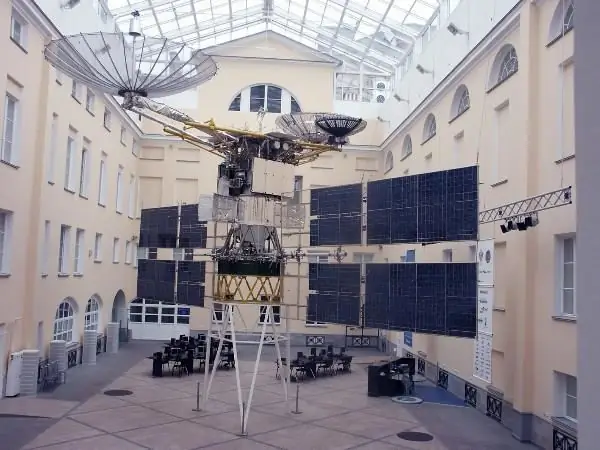- Author Henry Conors [email protected].
- Public 2024-02-12 02:44.
- Last modified 2025-01-23 09:07.
The life of a modern person is hard to imagine without communication. Thanks to mobile and landline phones, the postal service, the Internet, people communicate joyful and sad news, congratulate relatives and friends on holidays, call an ambulance, employees of other emergency services, make an appointment with a doctor, share recipes, talk about things at work and personal life events. Satellite communication allows you not to get lost in an unfamiliar area, track down sources of natural disasters, find a lost person, broadcast television films, programs in good quality, etc.
Like all human achievements, communication has its own history. In a primitive society, important information was transmitted with the help of voice and tom-toms. Later, various devices appeared that made it possible to hear each other at a distance. All these devices are offered to the attention of visitors by the Museum of Communications.

Location
The Central Museum of Communications is located in St. Petersburg, not far from St. Isaac's Cathedral, at the address: Pochtamtsky lane, 4. Before the revolution, the building it occupied belonged to the chief director of the post office, Prince A. A. Bezborodko.
You can see the most interesting exposition by reachingmetro to the Sennaya station, by trolleybuses No. 5, 22 (Pochtamtsky Lane stop) or buses No. 22, 27 (Konnogvardeisky Boulevard stop).
History of the institution
The Museum of Communications in St. Petersburg, formerly the Telegraph Museum, was founded in 1872 by Karl Lueders, who at that time was the director of the Telegraph Department. The first director of the museum was the writer, editor of postal and telegraph publications of the Russian Empire N. E. Slavinsky.
Later, the Museum of Communications changed its name, the management and exposition of the cultural object did not remain constant. Since 1945, the institution has been named after the inventor of radio communication, A. S. Popov. In 1947, the museum building fell into disrepair, so it was closed.
The doors of one of the most interesting museums reopened to visitors at the beginning of the 21st century. In 2000, a revival program was developed, according to which the communications facilities of the past were to become available to visitors in two years. The updated Museum of Communications in St. Petersburg reopened its doors on December 19, 2003
Exposure Features
All means of communication invented by people are gathered under one roof: mail, telephone, telegraph, and even satellite. The exhibits are decorated so vividly and realistically that they attract the attention of not only adults, but also children. Little visitors are delighted that some devices can not only be touched, but also checked how they work: put a stamp on a stamp, send a letter by pneumatic mail, call a 1903 model phone.

The history of the development of the postal service is demonstrated in the first hall. The viewers are presented with models of animals on which mail was transported (horses, dogs, camels), mail trains and ships. Also here you can see mailboxes of different years, a stamp cancellation machine.
The next room is occupied by models of buildings. Both the Museum of Communications itself and the buildings related to it are presented. The history of the emergence of the Main Post Office and other similar institutions is shown on the monitor screen.
Technical devices
One of the halls of the museum resembles a physical laboratory. Visitors not only look at the exhibits, but also gain knowledge from the field of physics: how color spreads on a TV screen, how the human voice is transformed, what are the features of Morse code, etc.
Several rooms show the history of radios and televisions. Here you can see old devices, modern sound processing consoles, walkie-talkies, learn about how radio communications worked during the war. A separate exposition is devoted to the inventor of the radio A. S. Popov, whose name the museum bears.
The switch room is also of interest. Previously, telephone communications were provided manually thanks to telephone operators. That is, in order to call your relative or friend, you had to first talk with a specialist, ask for a connection. Telephone exchanges of yesteryear were quite large, but modern devices are about the size of a small closet.
In one ofmuseum atriums, visitors are introduced to modern telephone technologies, they are told about modern satellite communications. Here you can also use the Internet.

A philatelist's dream
It is known that the address mail will not accept a letter without a stamp. Postage stamps have been around for a long time. Throughout history, the appearance and design of postage signs have changed. The Popov Museum of Communications has a unique collection of these things, which are so necessary for writing letters. Under each stamp, it is indicated when and in honor of what event it was released.
Opening hours

The Communications Museum is open to visitors from 10.30 to 18.00. Days off - Sunday, Monday and last Thursday of the month. Residents of other cities can "walk" through the halls of the institution through virtual tours.






